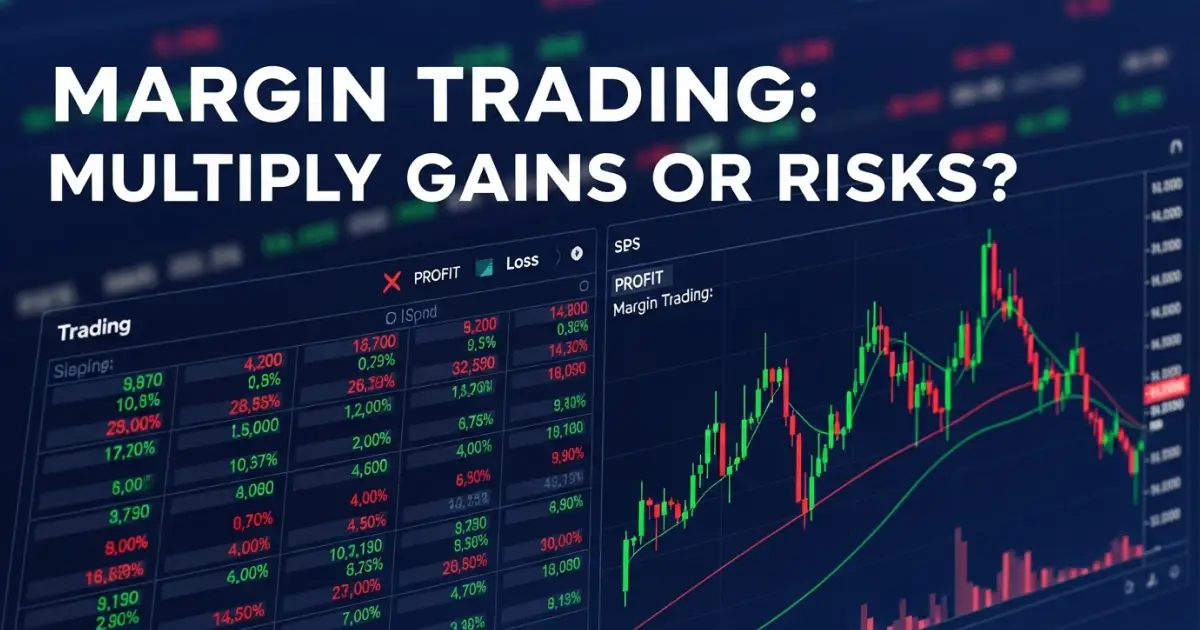
Ever wished you could turn $1,000 into $10,000 with a single trade? That’s the promise of crypto margin trading, but it comes with a catch.
What if I told you that the same strategy that can multiply your profits can also wipe out your entire investment in minutes? Welcome to the high-stakes world of leveraged trading, where borrowed money fuels bigger bets, and market swings can make or break you.
For anyone exploring crypto margin trading for beginners, the key is understanding how it works and what risks are involved. But how does it actually work? And is it worth the risk? Let’s break it down step by step so you can decide if margin trading crypto is right for you.
Key Takeaways
- Crypto margin trading lets you borrow money to amplify gains (and risks).
- Understand margin calls, liquidation risks, and the difference between cross and isolated margin.
- Only experienced traders with a strong risk strategy should use high leverage.
- Always monitor your margin level, and never risk more than you can afford to lose.
What Is Margin in Crypto Trading?
Margin is the money you borrow from a brokerage firm or crypto exchange to increase your trading position. Instead of using just your capital, you’re adding borrowed funds to amplify your buying power.
In crypto, you might only need to put down a small initial investment, called the initial margin, while the platform provides the rest. This allows you to take larger positions in volatile markets, which is why understanding how to trade crypto with leverage is essential for managing both risk and opportunity.
It’s like putting a down payment on a house; you don’t pay the full price upfront, but you still gain exposure to the whole property’s value. To be clearer:
- You put down some of your own money (initial margin).
- The exchange lends you extra funds (leverage).
- You control a much bigger position than you could with just your cash.
But here’s the kicker:
Bigger wins → Your profits are multiplied.
Bigger losses → You can lose more than you started with.
Real-World Example
Imagine Bitcoin is at $30,000, and you believe it’ll rise.
- Without margin: You buy 1 BTC for $30,000. If BTC hits $33,000, you make $3,000 (10% gain).
- With 5x leverage: You only need $6,000 (20% of $30k) to control 1 BTC. If BTC hits $33,000, your profit is still $3,000, but on just $6k invested (50% gain!).
Sounds amazing, right? But what if Bitcoin drops to $27,000 instead?
- Without margin: You lose $3,000 (10%).
- With 5x leverage: You lose $3,000, but that’s 50% of your $6k stake.
And if it drops further? You might face a margin call or liquidation (more on that soon).
How Does Crypto Margin Trading Work Step by Step?
Crypto margin trading involves borrowing money to buy or sell crypto assets, hoping to amplify profits. Here’s how it operates:
Open a Margin Account
Not all exchanges allow margin trading. You’ll need to:
- Sign up on a crypto margin trading platform (e.g., Binance, Bybit, Bitunix).
- Deposit funds into a margin wallet (separate from spot trading).
- Agree to the risks (yes, they’ll warn you).
Keep in mind, most platforms require you to pass a verification process, like Know Your Customer (KYC), to enable margin trading.
Choose Your Leverage
Leverage shows how much you’re borrowing compared to your own money. Most platforms offer 2x to 100x leverage.
- Lower leverage (2x-5x): Safer, less extreme swings.
- Higher leverage (10x-100x): High risk, potential for rapid liquidation.
For example, with $1,000 and 5x leverage, you control a $5,000 position.
Take a Position: Long vs. Short
You can go long (Taking a long position means you believe the price will rise. You borrow money to buy more cryptocurrency than you could afford with just your initial investment, hoping to amplify profits when the price rises), or short (A short position is essentially betting against a cryptocurrency. You borrow the crypto itself, sell it at the current price, and hope to buy it back at a lower price later. The difference becomes your profit, minus interest fees. This strategy is particularly useful in a volatile market where experienced traders can profit from both bull and bear markets).
If you’re bullish on Ethereum, you might go long by borrowing funds to buy more ETH than you could afford outright. If you think it’s about to dip, you’d open a short position, selling borrowed ETH to buy it back cheaper later.
For example:
- Going long ETH at $2,000 with 10x leverage → If ETH hits $2,200, you gain 10x the 10% move = 100% profit.
- Shorting ETH at $2,000 with 10x leverage → If ETH drops to $1,800, same 100% profit.
But if the market moves against you, losses accelerate just as fast.
Monitor Margin Requirements (The Dreaded Margin Call & Liquidation)
Exchanges set a maintenance margin, the minimum amount of collateral you must keep in your account to avoid a margin call. If your position’s value drops too far, the exchange may ask for more collateral or trigger a forced liquidation, selling your assets to cover the margin loan. This is often generally automated to protect the exchange.
So if your trade goes south, two things can happen:
Margin Call: Your losses eat into your collateral, and the exchange asks you to add more funds to keep the trade open.
Liquidation: If you don’t act fast, the exchange force-closes your position to prevent further losses.
Liquidation Price Formula:
Liquidation Price = Entry Price × (1− Initial Margin / Leverage)
(Example: At 10x leverage, a 10% drop can liquidate you.)
Pay Interest and Fees
Borrowing isn’t free. You’ll pay an interest rate on the borrowed funds, often calculated daily, plus trading fees (e.g., 0.01%-0.1% per trade). These costs can eat into your profits, so factor them in.
What Is the Difference Between Cross and Isolated Margin?
When you’re trading on margin, you’ll encounter two approaches: cross margin and isolated margin. Each has its pros and cons, depending on your risk tolerance and trading strategy.
| Feature | Cross Margin | Isolated Margin |
| Collateral pool | Shared across all positions | Dedicated to one position |
| Liquidation risk | Lower per trade, higher account-wide | Limited to isolated funds |
| Best for | Hedged portfolios | High-conviction single trades |
- Cross Margin Trading: Your entire account balance acts as a shared margin balance across all your open positions. If one position loses value, gains from other positions can cover the margin deficiency. This reduces the chance of liquidation but risks your whole account if things go south. Think of it as a safety net with holes – if one trade tanks, it could drag everything down.
- Isolated Margin Trading: Here, you assign a specific amount of margin to a single position. Losses are capped at that position’s collateral, protecting your other trades. It’s like putting each trade in its own bubble – safer for your portfolio but riskier for that one trade, as there’s no backup from other positions.
For example, Jake uses cross margin on Binance with $5,000 across multiple trades. If his Bitcoin long loses $2,000 but his Ethereum short gains $3,000, the gains offset the loss, keeping his account safe. With an isolated margin, that Bitcoin loss would only affect that trade’s collateral, leaving his other positions untouched.
Which suits you? Choose wisely, this decision can prevent liquidation or accelerate it.
What Are the Risks and Rewards of Crypto Margin Trading?
Rewards: Why Traders Love It
Margin trading is a magnet for experienced traders because it can amplify profits. Here’s why:
- Increased Buying Power: With leverage, you can trade larger positions than your initial investment allows, potentially raking in massive returns. A 5% price move with 20x leverage could mean a 100% gain on your capital.
- Profit in Any Market: You can go long or short, profiting whether the volatile market rises or falls. This flexibility is gold in crypto’s wild swings.
- Capital Efficiency: You tie up less of your own money, freeing up funds for other investments or trades.
Risks: The Dark Side of Leverage
But here’s the flip side. Margin trading is a double-edged sword. The risks involved are steep:
- Amplified Losses: Just as leverage boosts gains, it magnifies significant losses. A 5% price drop with 20x leverage could wipe out your entire margin.
- Liquidation Risk: If your position’s collateral value falls below the maintenance margin, the exchange may liquidate your assets, leaving you with nothing. Crypto’s volatile market makes this a real threat.
- Margin Calls: If your account’s margin level drops too low, you’ll get a margin call, demanding additional funds. Can’t pay? Your position gets closed.
- Interest Charges: The interest rate on borrowed money adds up, especially if you hold positions for days or weeks. These fees can minimize your profits.
- Market Volatility: Crypto prices can swing 10-20% in hours. High leverage in such a volatile market can lead to rapid liquidation.
Take Tom, for instance. He borrows $10,000 with $1,000 collateral at 10x leverage to buy Ethereum at $3,000. If ETH drops to $2,700 (a 10% dip), his position’s value falls to $9,000, and he’s liquidated, losing his $1,000. Had he used spot trading, he’d still have his ETH.
Scary? Yes, but smart risk management can help. Let’s look at how to trade safer.
Risk Management: How to Protect Your Capital
Margin trading isn’t for the faint-hearted, but these strategies can keep you grounded:
- Start Small: Use low leverage (2x or 3x) to get a feel for the market. High leverage, like 100x, is a recipe for disaster unless you’re a pro.
- Set Stop-Loss Orders: These automatically close your position if the price hits a certain level, capping your losses. For example, set a stop-loss at 5% below your entry to limit downside.
- Monitor Your Positions: Crypto moves fast. Check your margin level regularly to avoid surprises like margin calls or forced liquidation.
- Diversify: Don’t put all your margin into one trade. Spread your risk across multiple positions to cushion losses.
- Understand Fees: Factor in interest charges and trading fees when planning trades. Some platforms charge every 4-8 hours, so long holds can get pricey.
- Know Your Limits: Only trade what you can afford to lose. Never risk your life savings in a volatile market.
The market doesn’t care about your predictions. Trade smart, or get liquidated.
How to Choose the Right Platform
Picking a platform depends on your risk tolerance, location, and trading goals. Consider these factors:
- Leverage options: Higher isn’t always better – focus on what matches your risk tolerance.
- Interest rates: Lower borrowing costs mean more profit potential.
- Security: Look for platforms with cold storage, two-factor authentication (2FA), and insurance funds.
- Available markets: Ensure they support the cryptocurrencies you want to trade.
- User interface: A clean, intuitive platform can make the difference between profit and loss.
Conclusion
Crypto margin trading offers enormous upside, but it’s not for the faint of heart. It’s a tool, just like a chainsaw is for a lumberjack. In skilled hands, it gets the job done. In untrained ones, it can do real damage.
Ask yourself:
- Do you understand how leverage and liquidation work?
- Are you prepared for the emotional rollercoaster?
- Can you manage multiple positions without panicking?
If you answered “yes,” then explore carefully, pick a reliable platform, and always keep risk management at the core of your approach.
And if you’re still unsure? Start with spot trading, learn the ropes, and move into margin once you’re truly ready. The crypto markets will always be here, full of opportunities for those who approach them with wisdom, patience, and proper preparation. The choice is yours – just make sure it’s an informed one.
FAQs
What is a long or short position in margin trading?
A long position bets the price will go up; a short position bets it will drop. With money borrowed, margin trading lets you profit in both directions.
Who regulates crypto margin trading?
In traditional finance, the Financial Industry Regulatory Authority (FINRA) sets margin rules. Crypto exchanges vary, some follow similar standards, but regulation depends on the country.
Does margin affect the purchase price?
No, the purchase price stays the same. But with leverage, you control a larger position using less of your own capital and more borrowed money, magnifying gains and losses.
What is a forced sale in margin trading?
A forced sale (or liquidation) happens when your position’s total value drops below the required margin. The exchange auto-sells to cover losses unless you add additional cash.
Why do many investors lose money with margin trading?
Because many investors underestimate crypto volatility. A small move against a leveraged position can trigger a loss or forced liquidation, especially without proper risk controls.
What is the exchange commission in margin trades?
It’s the fee charged per trade. On top of that, there may be interest on borrowed funds, so margin trades often cost more than spot trades over time.
When must I add additional cash to my margin account?
When your margin level drops near the maintenance margin, you’ll need to deposit additional cash or face a forced sale to cover potential losses.
About Bitunix
Bitunix is one of the world’s fastest growing professional derivatives exchanges, trusted by over 3 million users across more than one hundred countries. Ranked among the top exchanges on major data aggregators, Bitunix processes billions in daily volume and offers a comprehensive suite of products including perpetual futures with high leverage, spot markets, and copy trading. Users can trade bitcoin and other major cryptocurrencies on the platform, taking advantage of advanced trading features. Known for its Ultra K line trading experience and responsive support, Bitunix provides a secure, transparent, and rewarding environment for both professional and everyday traders. Bitunix Academy adds structured lessons so you can build skills while you trade.
Bitunix Global Accounts
X | Telegram Announcements | Telegram Global | CoinMarketCap | Instagram | Facebook | LinkedIn | Reddit | Medium
Disclaimer: Trading digital assets involves risk and may result in the loss of capital. Always do your own research. Terms, conditions, and regional restrictions may apply.


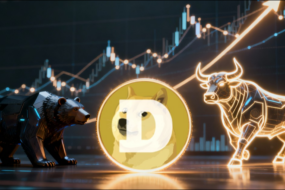

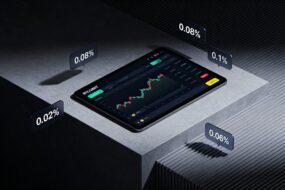
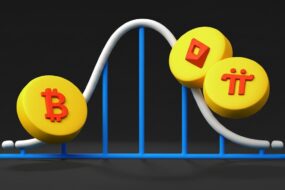

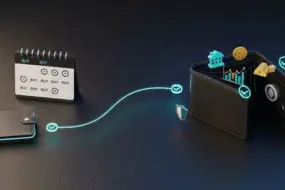


One reply on “Crypto Margin Trading for Beginners: How to Trade with Leverage”
Hi there, I found your website by the use of Google whilst looking for a related topic, your site got here up, it
seems to be great. I’ve bookmarked it in my google bookmarks.
Hello there, simply changed into alert to your weblog through Google, and located that it’s really
informative. I’m going to watch out for brussels. I’ll appreciate in the event
you continue this in future. A lot of other people will probably be benefited from your
writing. Cheers!